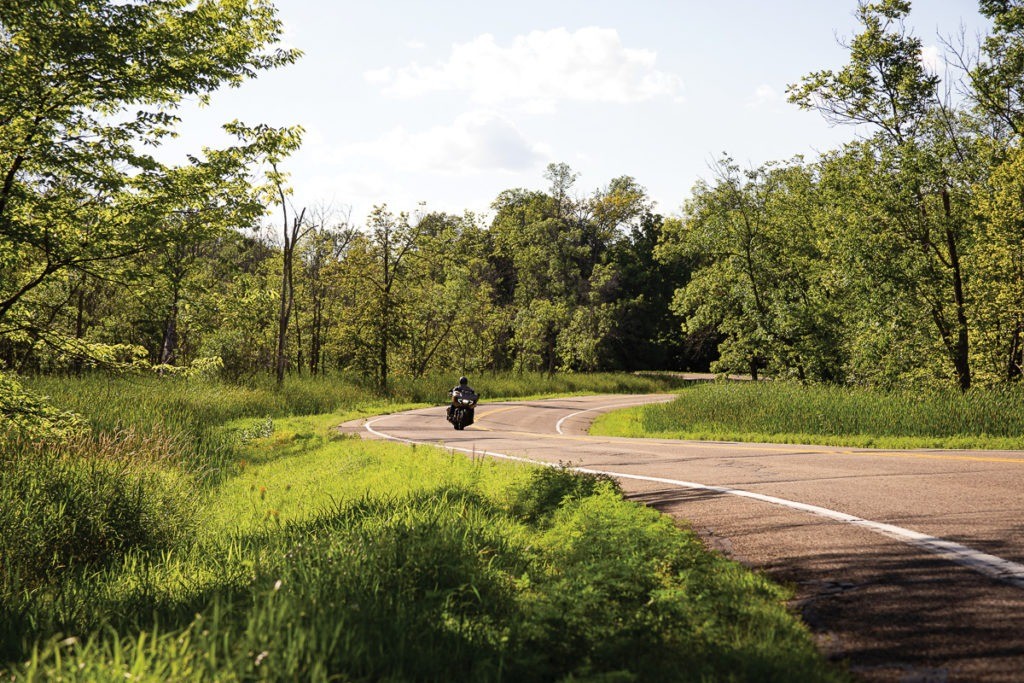
Rediscovering Lake Superior’s Apostle Islands aboard Indian’s Challenger Dark Horse
Words by Kali Kotoski
Photos by Kali and Sahlee Kotoski
The Old Man and the Freshwater Sea: Part 1
I honestly couldn’t believe he was still alive. But there he stood, leaning on the railing of the second-floor balcony of the marina’s diesel engine repair shop. A pair of unseen feet pattered down the stairs to peek at who had arrived but remained in the shadows as classical music played inside.
Alfred had aged remarkably well, it appeared. His face was cleanshaven and his swarthy skin seemed lighter without his bushy naval mustache. His hair had greyed by degrees and a bandage over his nose either protected a cut or covered a recent biopsy. It was a hot and clear July day, yet the cool breeze off of Lake Superior made it comfortable, and above me stood living proof that some people are truly too stubborn to die, as they say.
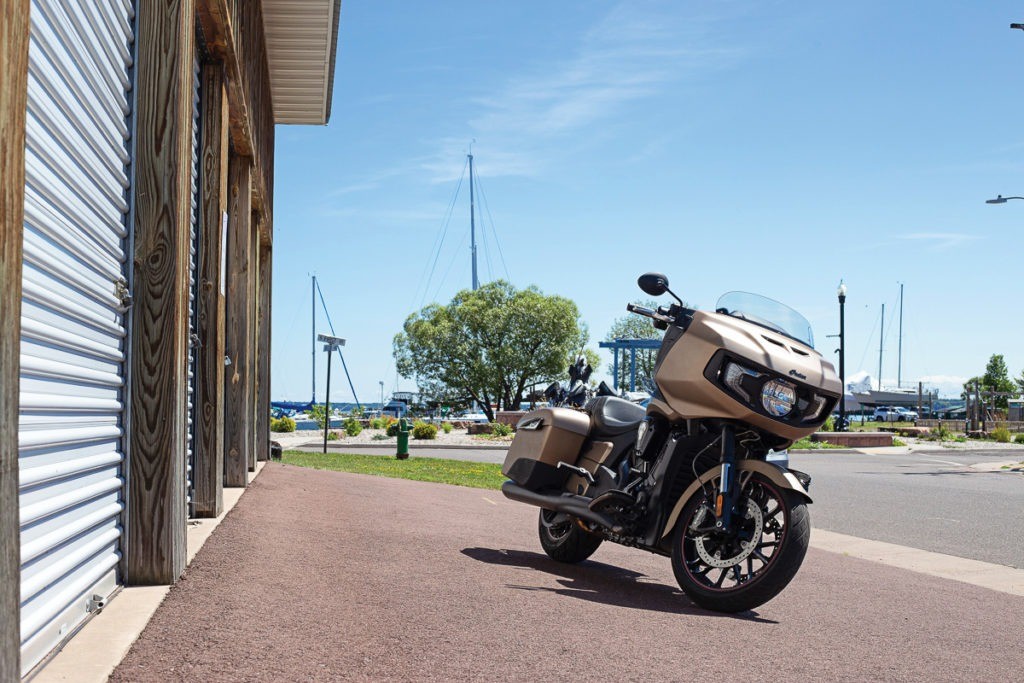
“I think I remember your uncle and father,” Alfred said with his sausage-like fingers interwoven, showing the glint of a wedding ring. “What was the name of your uncle’s boat?”
“Gretel. It was Gretel,” I said. As he stared into the distance, I realized how much quieter and slower his voice is from what I remembered when I last saw him nearly 20 years ago. He sounded either humbled by age or, more likely, humbled by a stroke. “My uncle had his 29-foot Ericson up here for at least a decade,” I added, “and you stored it in the back for years so my dad and I could do fiberglass repairs.”
“Oh, sure. Yeah, that sounds familiar. How is the boat doing and where is your slip?” Alfred asked.
“A tree fell on it and it pierced the top deck in a bunch of places,” I said. “So a guy came over and scrapped it for the lead in the keel.”
“I am sorry to hear that,” he said. And after a few more bits of small talk, it was like a switch was flipped and old Alfred, the dickhead, was back.
“Soooo… can I help you with something?” he asked before giving me a curt dismissal.
Yep, that was the Alfred I remembered. While he always ignored me as a kid when I came up for the annual sailing trip in Wisconsin’s Apostle Islands with my uncle and father, he was a terror to his customers. Short tempered and prone to explosion. A brooding and angry German immigrant who any longtime customer could see was on the brink of creating an irreparable rift with his son Walkie—the heir apparent to the business and a peacemaker.
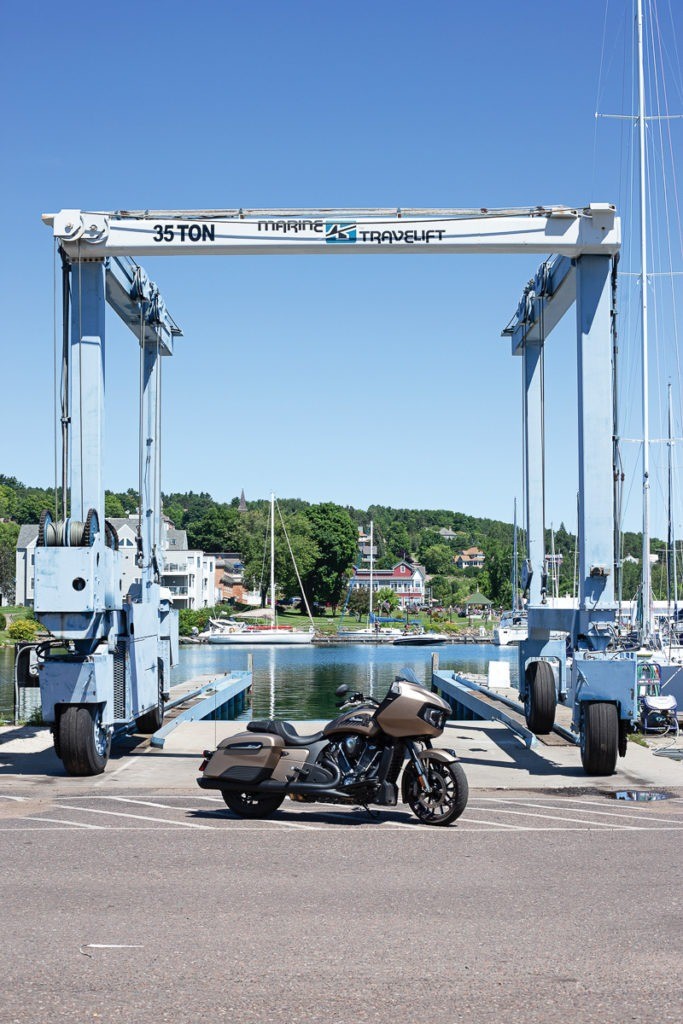
Now Alfred was 82 or 83, weaker, but still alive and could have been Anthony Quinn in his 1990 portrayal of Hemingway’s short masterpiece. And the shadowy figure who ran down the stairs, who my wife caught sight of briefly, was clearly not the wife he had some 20 years ago.
Before I’d gone searching for Alfred, we spent time in the marina’s gravely parking lot, staging bike photos of our 2020 Indian Challenger Dark Horse testbike with Lake Superior in the background, which was difficult as I was being hit with wave after wave of nostalgia, especially because the marina had not changed at all in 20 years. I mean literally had not changed. The backhoe on the floating barge was parked in the same spot and the weathered boathouse was still standing. Nearly all slips were full, so business must have been good.
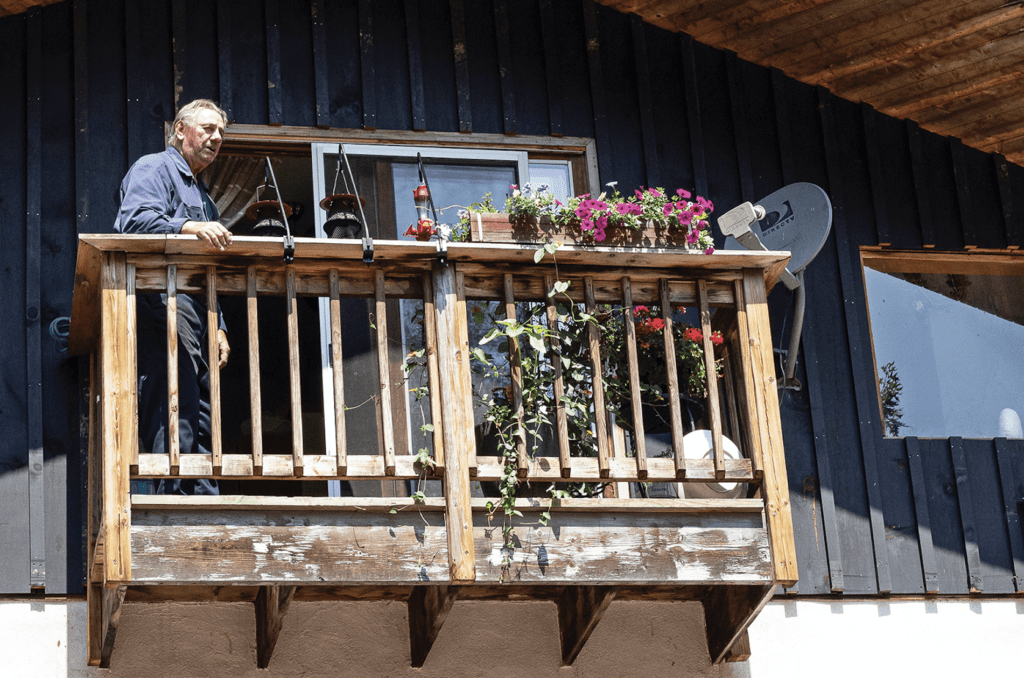
An old, rusty Ford Explorer came down the hill and parked near us and a skinny man smoking a Marlboro and wearing a blue mechanics’ jumpsuit stepped out.
“Wow, they sure don’t make them like they used to,” he said, asking questions as he took time to look over the bike.
At the core of the 2020 Indian Challenger Dark Horse is Indian’s new PowerPlus 108 V-twin engine—a nod to the first flathead engine the company produced between 1916 and 1923. While the namesake is a throwback, this engine is a great engineering leap forward for American motorcycles. Fully liquid-cooled, the 1768cc engine claims to make 128 lb-ft of torque and 122 horsepower. It is a 60-degree V-twin with four valves per cylinder and uses a single overhead cam in each head.
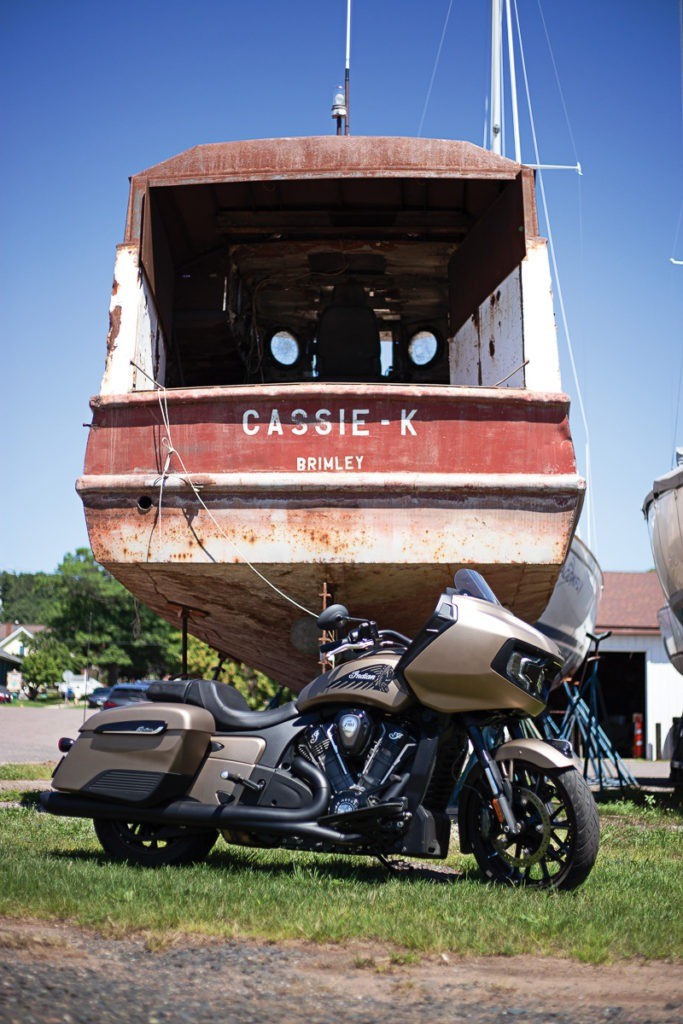
Undoubtedly powerful, as I explained to Nick, this engine loves higher RPMs. A quick test of hammering the throttle from a rolling start, had me at 110 mph while starting to hit the red in fourth gear. At high revs, shifting from first to second gear clenches your fists as your stomach pushes back against your spine. Luckily, Indian put in wheelie-limiting tech to prevent surprises.
With the Challenger being Indian’s first dedicated bagger to come out of Minnesota, it will be thrilling to see what other models will form around the PowerPlus engine.
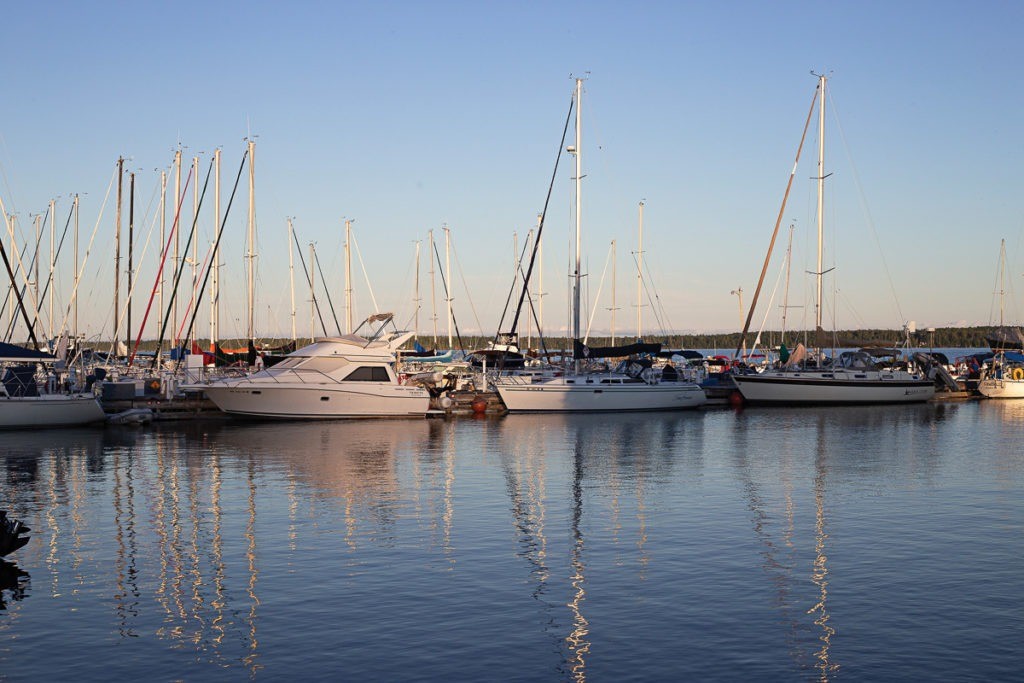
The way up to Bayfield
I have never been one to plan (or map out) trips, instead preferring to take it as it comes and hope that challenging roads will present themselves. So, when we left the Twin Cities and entered Wisconsin it was also a test of memory, as I frequented the same path from the passenger side of a car year after year until I didn’t. Plus, motorcycling is as much about discovery as rediscovery.
But the lack of planning brought us to exactly what I tried to avoid—a boring stretch along U.S. Route 53. The corridor runs from La Crosse, WI and terminates at the Canadian border in Minnesota. It is a perfectly fine road being wide and open and fast. Minus a 30-mile stretch of road construction, it does what the road was designed to do. However, I was trying to take it easy to get my riding legs, and brain, fortified. This was the first long ride I had really taken since the pandemic swept the country, which had instilled a sense of nagging and existential dread, complete with quarantines, isolation, cancelled trips and general contempt of the system as a whole.
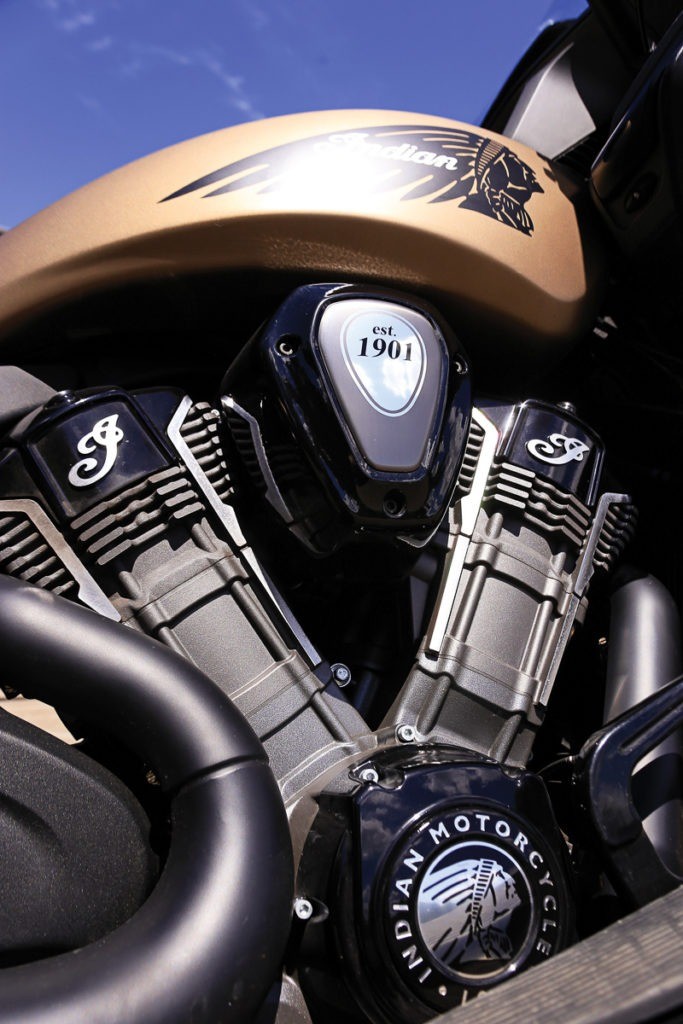
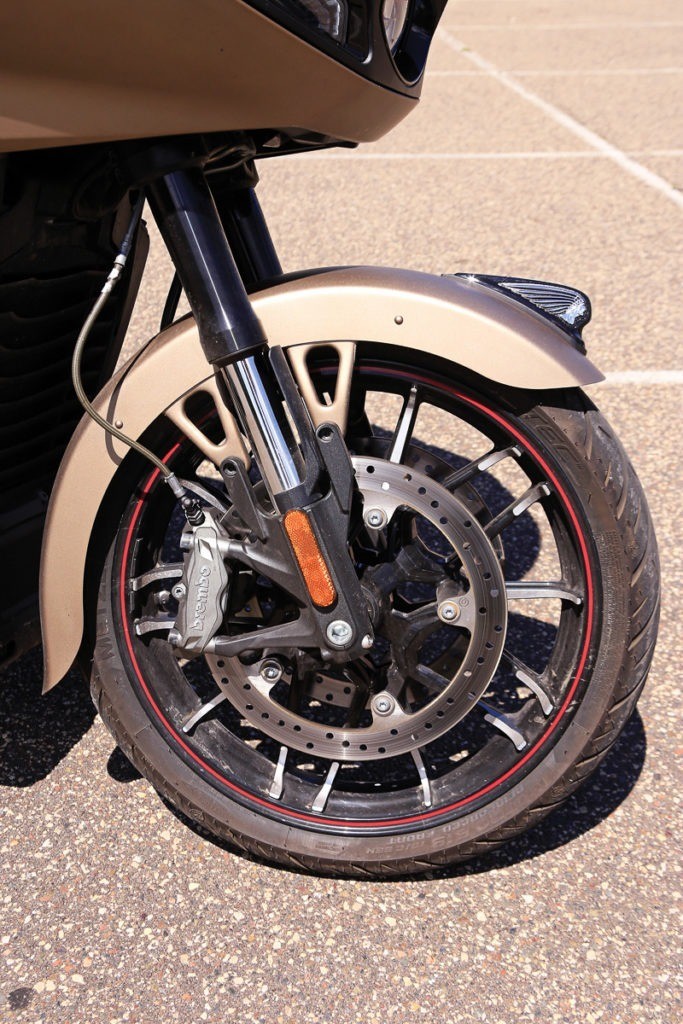
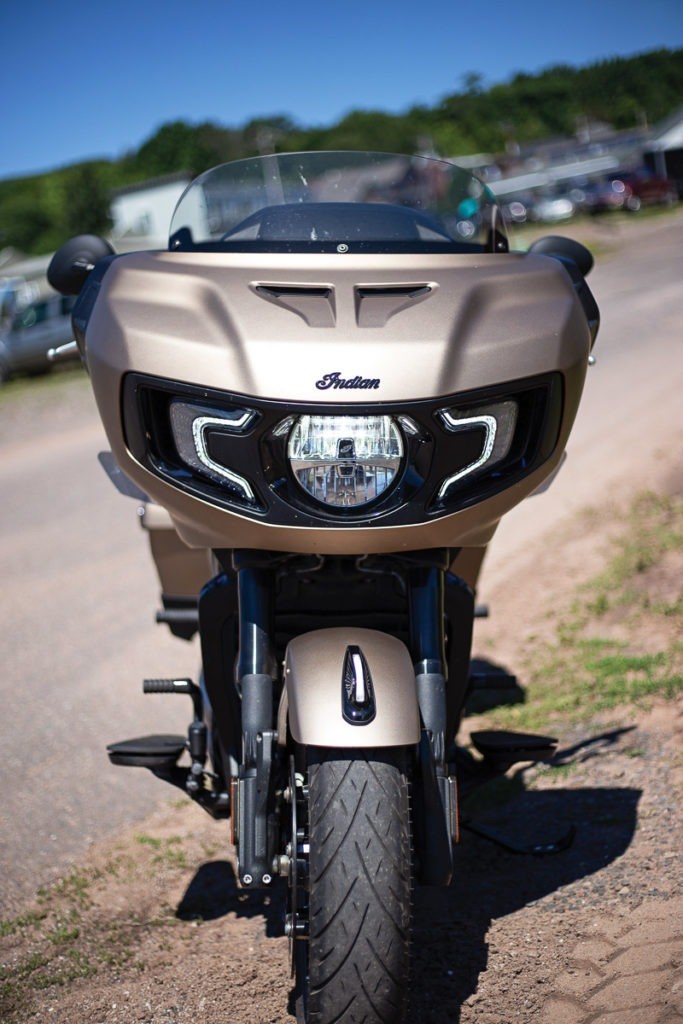
The transition back into a riding state of mind came quickly, in a large part because of how comfortable the Challenger is. It was easy to stretch out and sit back, with my butt getting plenty of grip and support from the tall rear bolster. I had the electrically adjustable windscreen, which has a three-inch range of travel, all the way up to hear the tunes blasting from the Challenger’s speakers and to create a calm space with closed fairing vents. When we weren’t getting blasted by 40 mph gusts of wind that I had to lean into, it was a nice cocoon. It was clear Indian devoted a lot of the development during wind tunnel testing.
While I tried to use the built-in GPS mapping sparingly, I was repeatedly looking for an eastbound road to get off the freeway. Plugging in a destination is rather intuitive and fast, but the only personal problem with following a destination route is that it feels like you are on a treadmill, convinced you have run a half-mile only to realize it has only been a tenth of a mile. It would be nice if that mileage indicator could be swiped off the screen. It would have also be nice if the navigation system could pick up road construction updates as a few turns led us onto stop-and-go asphalting operations.
By the time we completed the five-hour journey to Bayfield, WI, there was a surprising lack of fatigue and I was still limber after checking into the Airbnb above Greunke’s Restaurant—a nice and well-kept hole-in-the-wall, according to photos as the dining area was shuttered over city-wide health concerns. Instead, people could eat and drink outside beneath a beer garden tent.
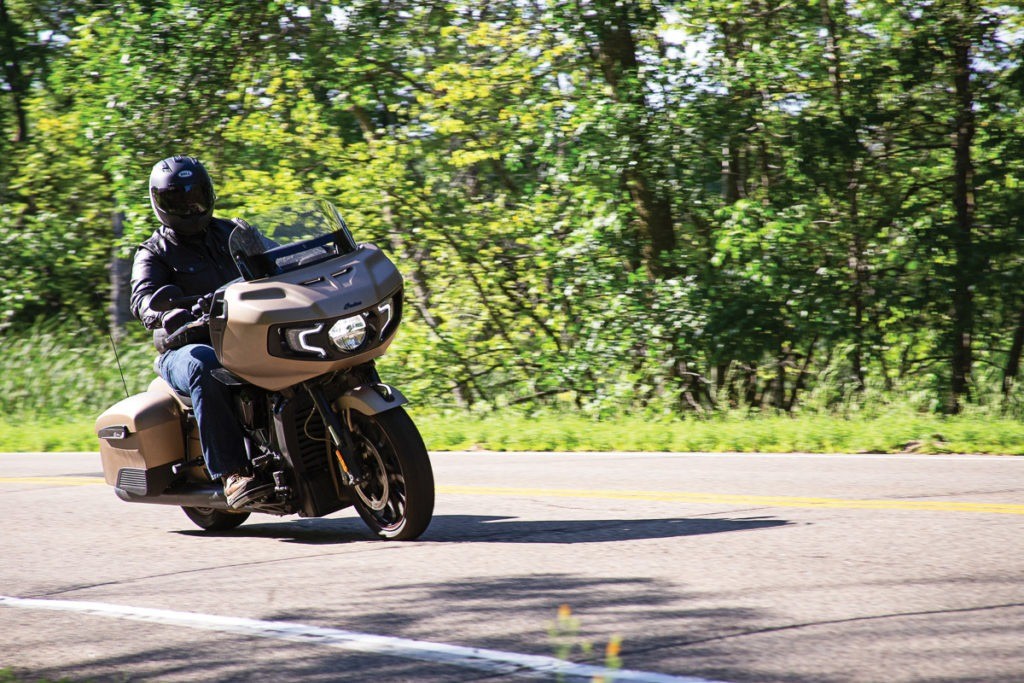
Madeline Island
“They got some of the best damn pie in Wisconsin right here,” an elderly man wearing a checkered farming shirt and suspenders shouted to us as we were loading up the bike—furtively trying to stow the towels we borrowed from the room—to take it by ferry to Madeline Island.
“You have to try the apple and strawberry rhubarb with some vanilla ice cream,” he added, spryly hopping up from his seat and gesturing for his group of friends to follow.
As he approached, he asked where we had ridden from and what model of bike the Indian was after proudly pointing over to the three Harley-Davidson trikes parked all shiny across the street.
“Well, you know the whole thing about trikes,” I started to say.
“I am almost 80. If it wasn’t for a trike I wouldn’t be riding. But hell, at least this bike is Minnesota made,” he said, stooping low. “Chrome really isn’t popular anymore, is it?”
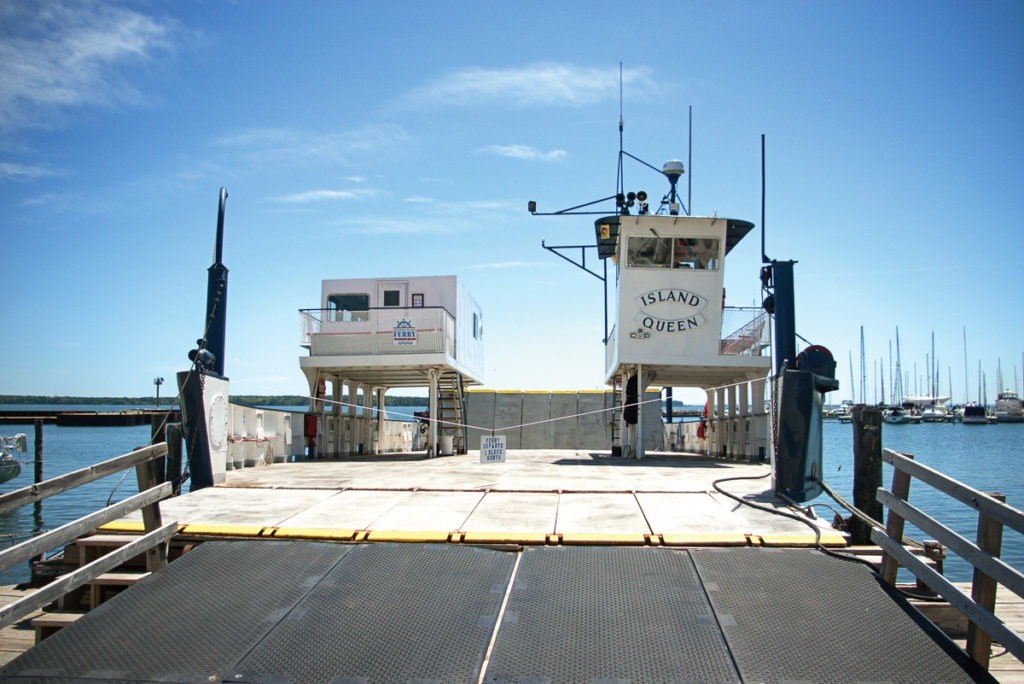
The Dark Horse model of the Challenger takes the bike’s trimmings to the next level while exploring some new territory. Starting up front, there is a revised version of Indian’s iconic war bonnet ornament seated prominently on the top of the fender. The bike I was testing was the Sandstone Smoke matte finish version (Thunder Black Smoke and White Smoke are the only other colors available in this premium offering), which made the blacked-out fork stanchions and engine even more impressive.
The six-gallon teardrop fuel tank gives the bike a subtle custom flair while being proportionally stretched. It is a bit of an ode to now-defunct Victory Motorcycle line Polaris owned before pulling the plug to go all-in with Indian—a smart move in my opinion seeing how important brand recognition is to most buyers in this category.
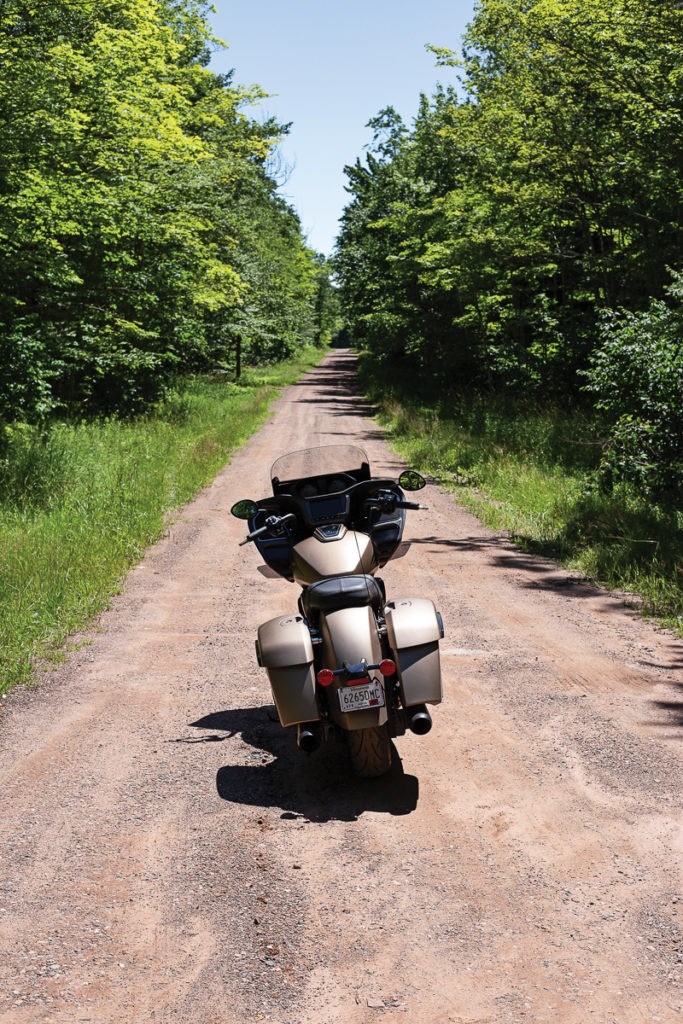
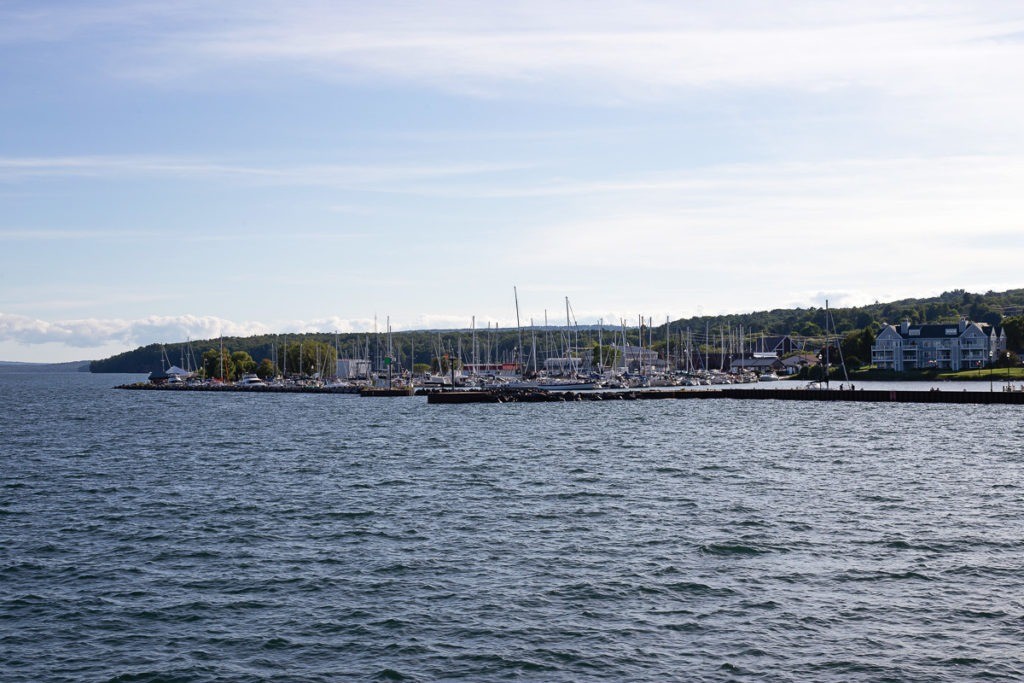
Above the seven-inch color touchscreen sits two analog gauges for speed and RPM. The screen, however, is of course the centerpiece and acts as a pretty well-designed interface for the Ride Command infotainment feature, which features real-time navigation and weather overlay options. Even while riding, if you let up on the throttle, you can access the bike’s three distinct riding modes: Rain, Standard or Sport. Just remember it won’t engage if any pressure is being applied to the throttle, so it is best to change settings when fully stopped. The only thing I noticed wrong about the system was the fuel level indicator appeared to be inaccurate especially after leaving the bike to sit overnight. A hundred miles left when parked for the evening and 60 miles showing on startup. As things sloshed around, the level would rise and cut the discrepancy in no greater than half.
After boarding the ferry to Madeline Island, we started to see how expansive the Apostle Islands are, with some just a lazy blip on the horizon. I have set foot on every Apostle Island besides Madeline, despite it technically not being an Apostle Island because it doesn’t fall into the federally protected conservation area, which makes it the only island to allow inhabitants.
With year-round population of a little over 300 people, Madeline Island has a storied history for both Americans and Native Americans. French fur traders used the ferry landing, La Pointe, as a colonial trading post established in 1693, and that area remains the sole business hub for the island, now flanked by million-dollar homes. The French also sought to curry favor with the Chippewa, and often married the daughters of elders and chiefs to cement peace and wealth.
Madeline Island is the spiritual center for the Ojibwe/Chippewa Indian tribe, despite Native Americans still having claim to only a small part of the island (195 acres of the island’s 15,359 acres). As the story goes, the Chippewa received divine guidance to travel from the east in search of “the food that grows on water,” or what historians agree to be wild rice. Once on the sacred island, the Chippewa flourished and were active in inter-tribal trading throughout Lake Superior.
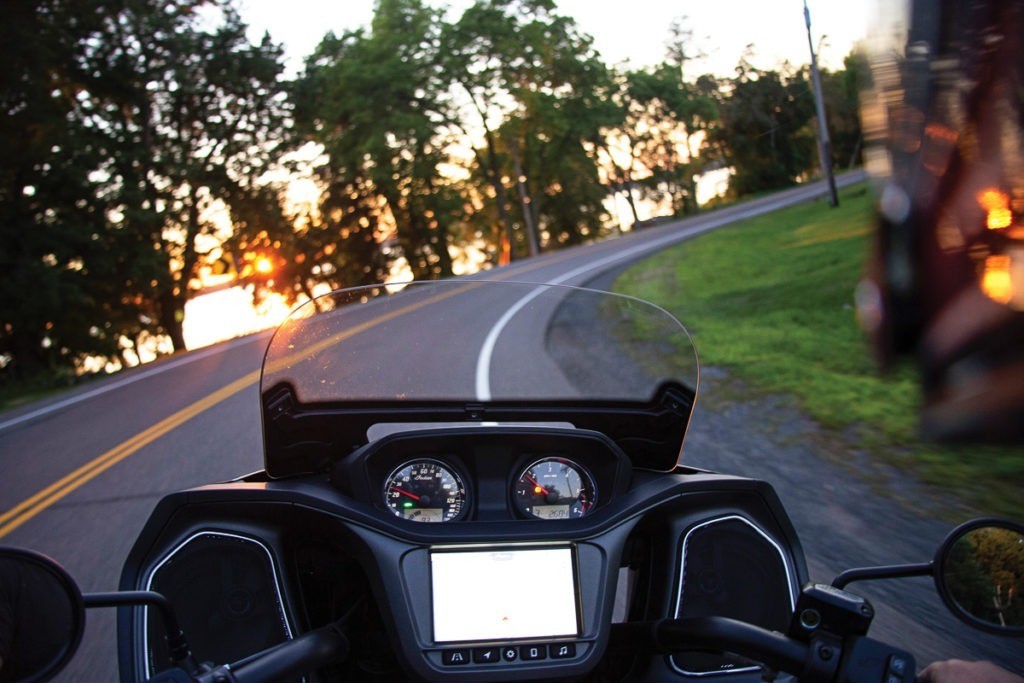
But by the 1800s vast migrations of settlers jeopardized their tribal home with threats of removal that culminated in 1850 with the Sandy Lake Tragedy. As government officials were actively trying to push Native American tribes west of the Mississippi River, they reneged on various treaties and changed the site of annual annuity payments for the Chippewa from La Pointe to Sandy Lake, MN. The scheme was to have the Chippewa stay loosely sheltered in Sandy Lake throughout the winter in a bid to wear down resistance. Some 400 tribal members died of disease, starvation and cold while waiting for the payments that never appeared.
The tragedy only strengthened the Chippewa’s resolve, and outrage helped gain widespread public support by eastern cosmopolitans to grant permanent reservations near a tribe’s traditional territories.
Traveling along the 45 miles of paved and unpaved roads of the island (majority unpaved) there are few signs left of the Native American past. And with an outside dining order in place and local mask enforcement, we spent little time at the shopping and art gallery in town, favoring an ice cream parlor.
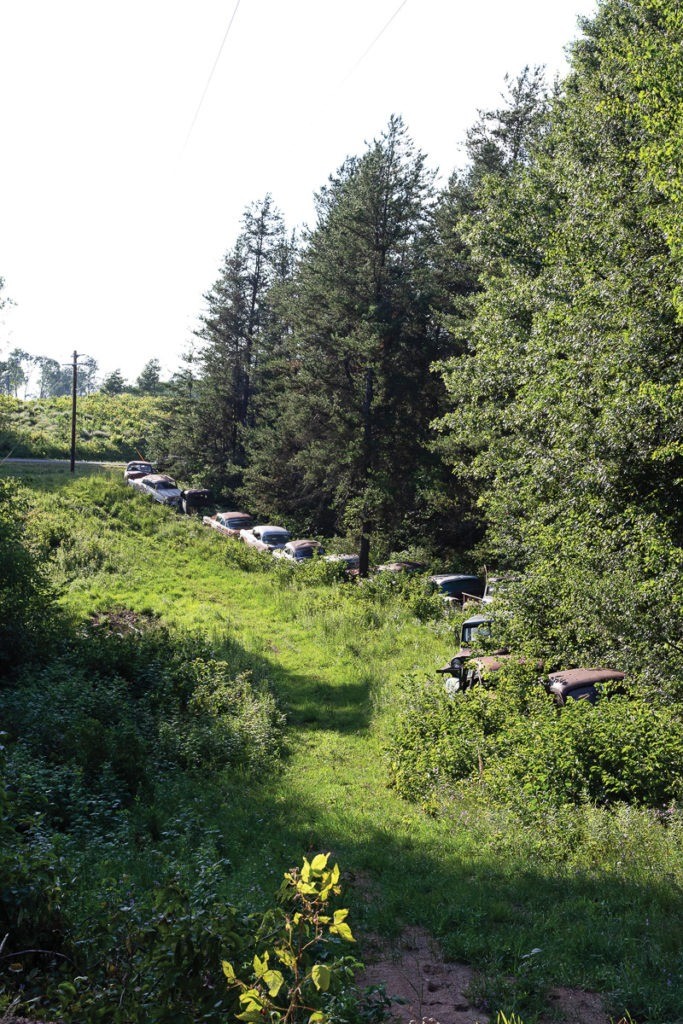
Still, there were plenty of stretches where I could open the Challenger up on narrow roads with sharp turns while also giving rain mode a test on dirt roads. When rain mode is activated, throttle response is dramatically decreased, giving more control and traction and less of the ‘oh shit, sorry about that abrupt shifting’ feeling that happens in sport mode if you don’t understand how much power the bike has. Some have criticized the heavyset bagger as being cumbersome at slow speeds despite its fixed fairing. While the bike weighs 840 pounds I found it easy to maneuver nimbly around patches of sand or when confronted with dead ends. By no means is it built to handle unpaved roads, but with a little bit of skill and caution a rider is fine.
Big Bay State Park in the middle of island is a pleasant place to catch some sun along the 1.5 miles of sandy beach, although I questioned the logic of grabbing hand towels from the Airbnb instead of bath towels. Lake Superior never really gets warm despite clear summer skies, with average water temperatures around 60. Depending on the current, warm pockets can be found, though the waters along the beach at Big Bay State Park were devoid of them, with a dip in the lake being a more powerful jolt than an energy drink. Still, that didn’t seem to stop the flocks of people who were out swimming, especially young kids who were impervious to the cold.
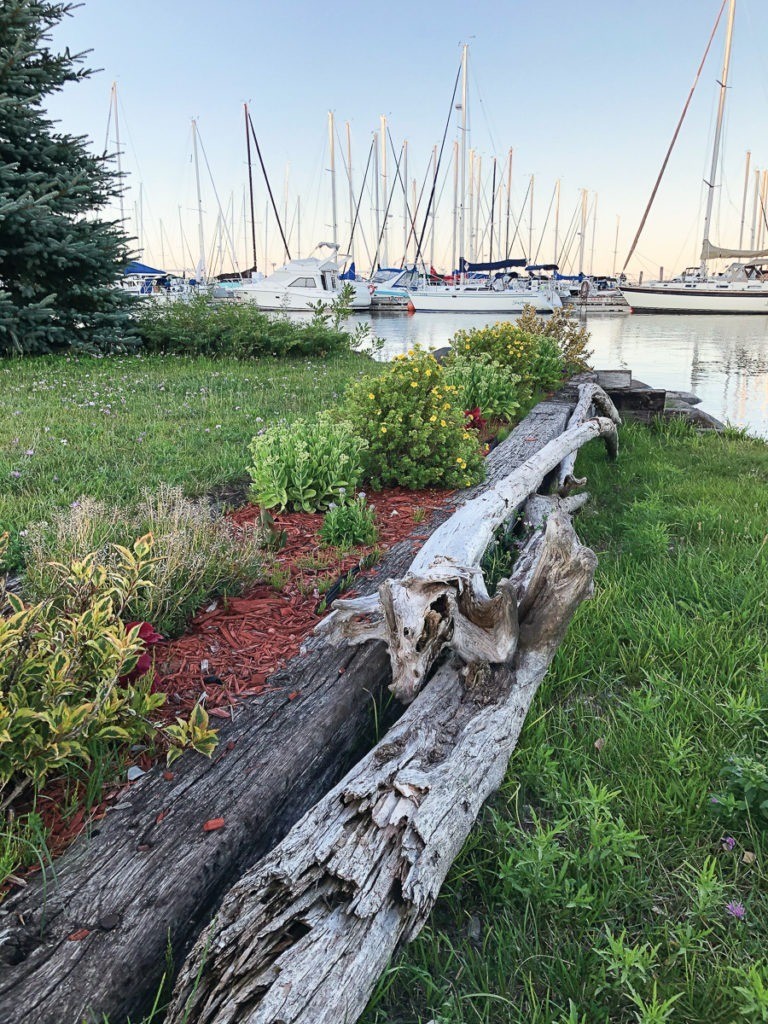
The Old Man and the Freshwater Sea: Part 2
Trying to find the marina I spent so much of my childhood at was more difficult than anticipated. It is located on the Red Cliff Indian Reservation, past the recently rebuilt and expanded casino that looks out over the islands. To accommodate the economic expansion the tribe relocated its historic and popular pow-wow grounds further inland. Beating back against the hipster domination of craft breweries and distilleries, the reservation now boasts the Copper Crow Distillery, which I have no doubt earns its claim as the first Native American distillery in the United States. Wheat vodka, dark rum, whey gin and whey vodka are just some of their specialties.
“So, is Walkie still around these days?” I asked Nick after we were done chatting about the Challenger.
“Nope. I took over his job in 2004 and this is the first year I actually had enough to buy my own sailboat,” he said.
“Congrats, man,” I said. “Still, too bad about Walkie though.”
“It is what it is. Alfred can be demanding,” he said.
“Honestly, I am surprised Alfred is still alive,” I said.
“That makes two of us,” said Nick.
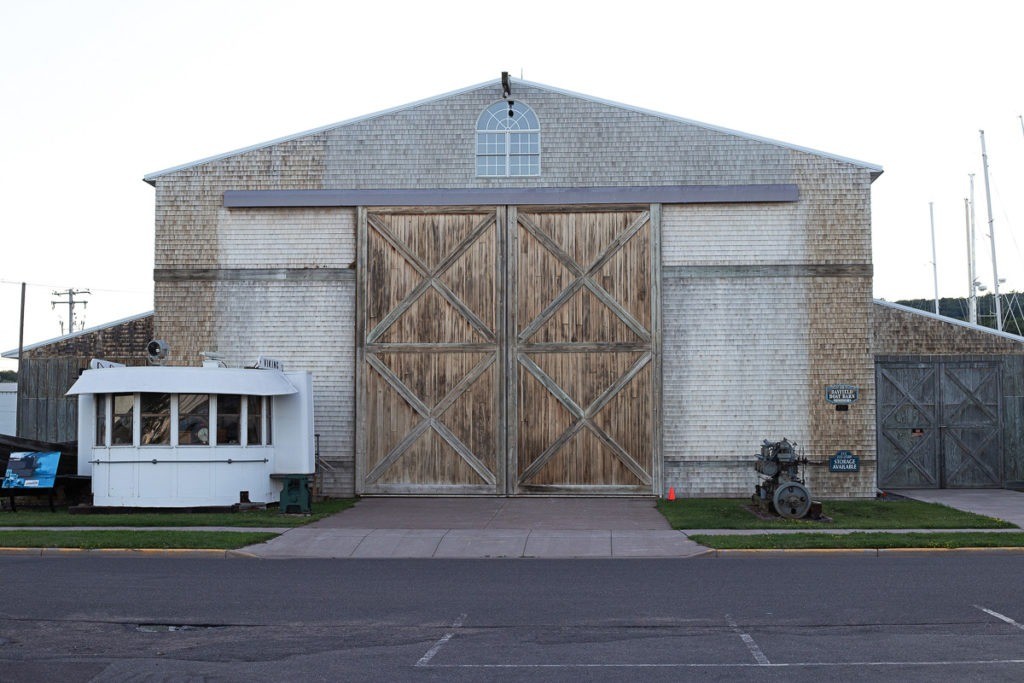
Few things are known about Alfred, that old curmudgeon. My earliest memory of him was that he was an affable man and that was long before he turned sour. What had changed in his life is anyone’s guess. But what is known is that he was born in Germany before the end of WWII, in either 1937 or 1938, and did not emigrate to the U.S. until he was an adult. His pleasant wife that I remembered didn’t appear to be part of the picture anymore.
And as I looked up at Alfred, I couldn’t help myself from asking about his son.
“Walkie doesn’t like to get along with his old man and I don’t like to get along with my son,” Alfred said with a bit of amusement.
“Hell, well some things never change,” I said, which elicited a short laugh from Alfred and probably was what flipped the switch that led to my prompt dismissal.
As we rode home, I found some of the best Wisconsin roads I had ever encountered, thanks to a tanker that had crashed early in the morning and that by early afternoon still had the interstate shut down.
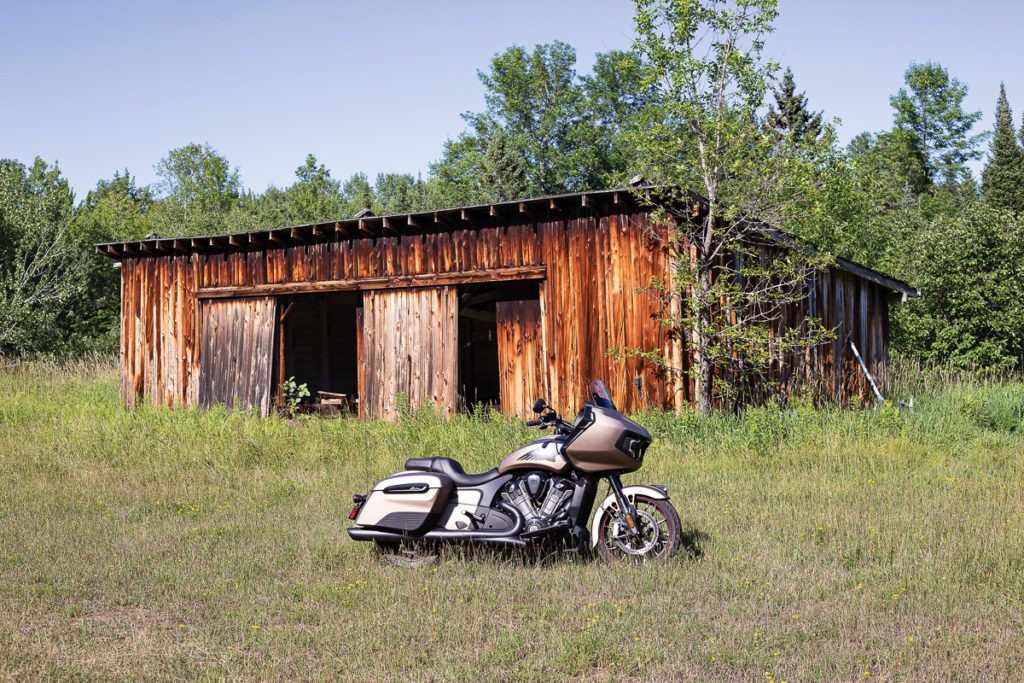
I had become accustomed to the Indian Challenger Dark Horse and finally felt that I could really push it on a 20-mile stretch of challenging turns to check out the performance. What sets the Dark Horse apart from the modestly cheaper standard version is a suite of ride-affirming tech upgrades, which includes their Smart Lean Technology that uses a Bosch IMU to enable cornering ABS and traction control as well as Drag Torque Control. While I never engaged the cornering ABS, just knowing it was there was assuring. And when I did downshift too quickly the Drag Torque Control engaged smartly and securely, which helped greatly to prepare me and the bike for the upcoming corner.
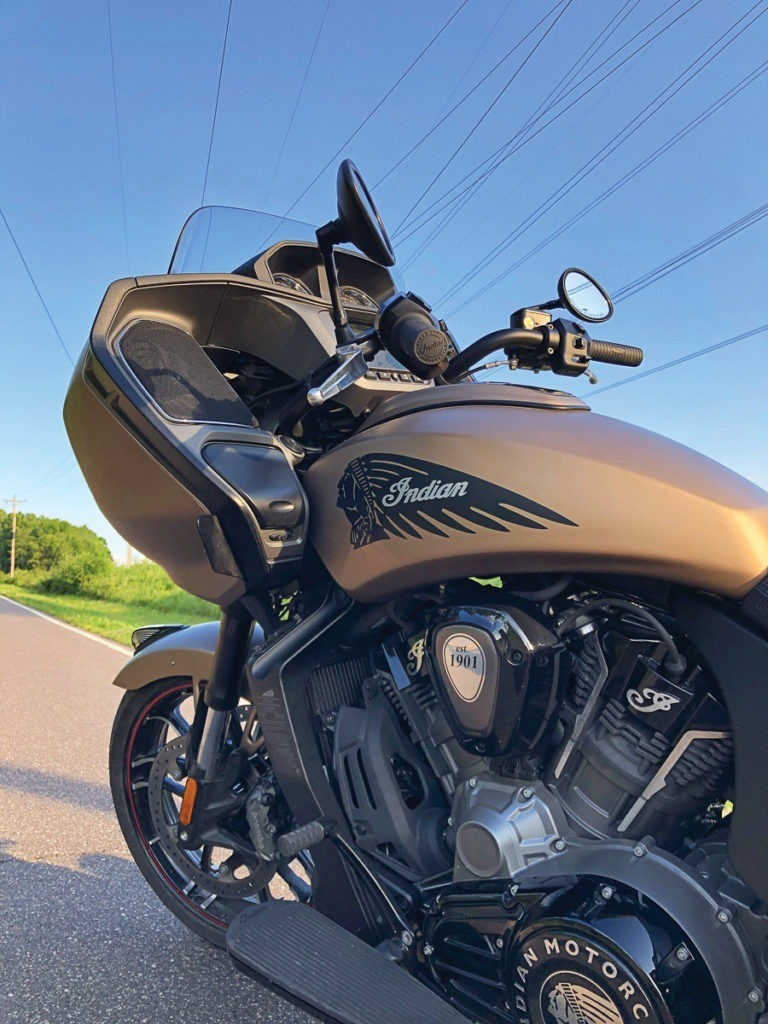
As I chewed up the miles it was oddly comforting to think that in this crazy, unholy year of 2020 there are still a lot of things that just plain work – and the Indian Challenger certainly fits into that category. With excellent power, an impeccably smooth ride and all the creature comforts you could ask for, it’s a best-in-class bagger that sets very high standards for others in the class to follow – no matter what a rider seeks to discover, or rediscover.
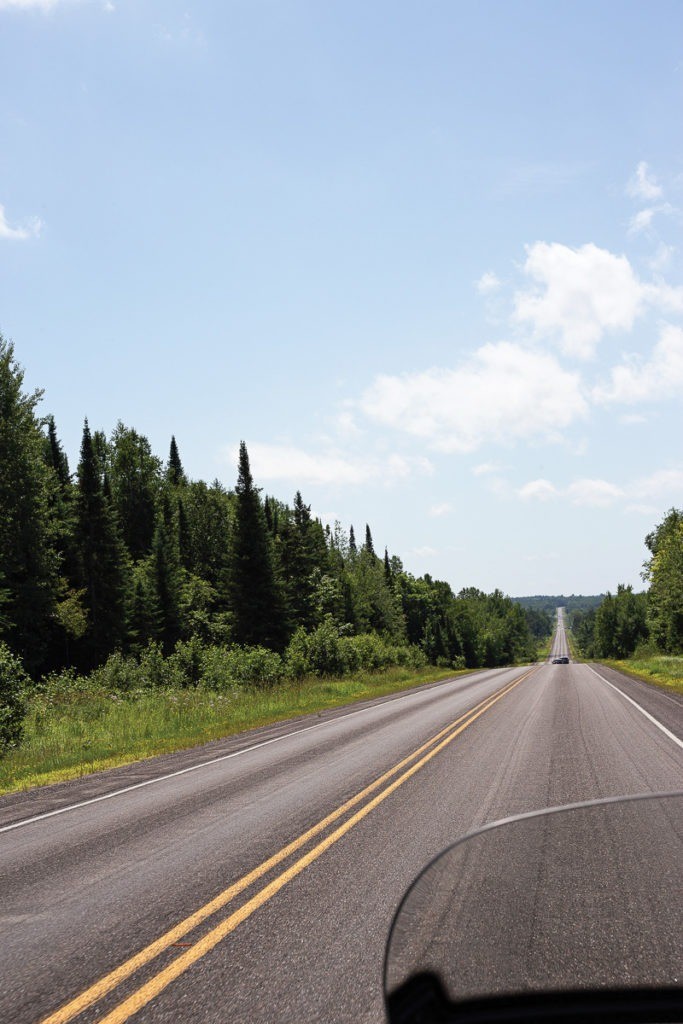


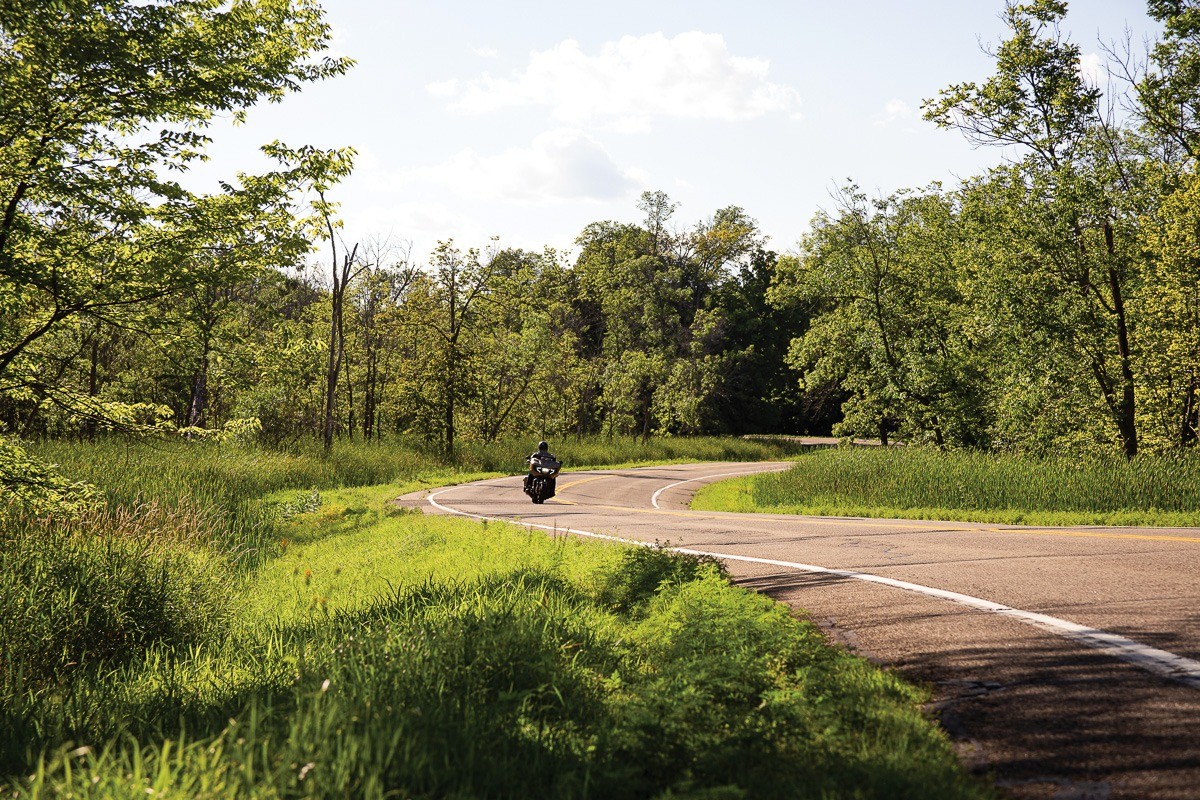
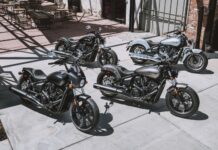
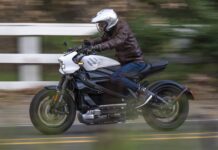
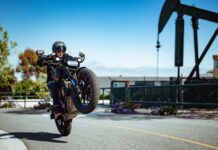

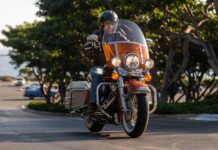











What a dumb article regarding the Indian Challenger. The reporter stated “Luckily, Indian put in wheelie-limiting tech to prevent surprises”. Really? Lucky an 840 pound motorcycle with only a claimed 122 stinking HP has wheelie control??? BTW, that’s at the crankshaft, Rider Magazine dyno testing found the Challenger only made 107 HP at the rear wheel. You’d have to dump the clutch at redline to get it to lift the front tire at all. As a whole the article is more about the Apostle Islands than the motorcycle. You guys should read some other bike magazines to learn how to actually write a motorcycle review!
Fully enjoyed the travelogue and photos. It’s always nice to view and read others opinions of areas and sights we’ve missed the privilege of visiting.